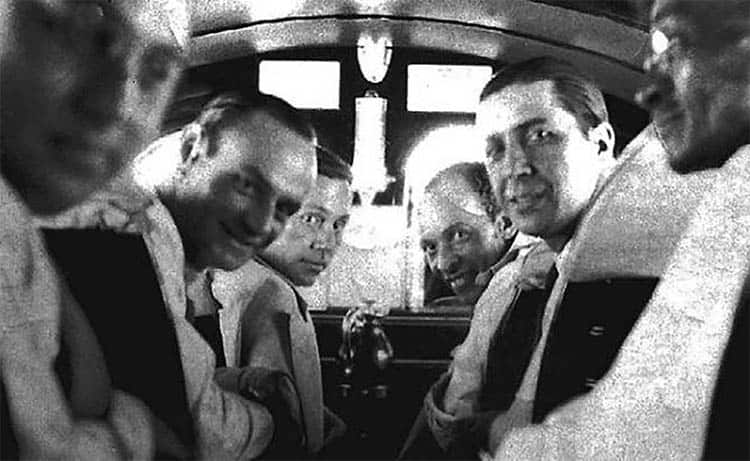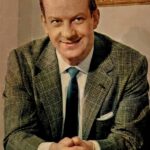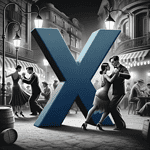Alfredo le Pera is remembered as the co-genial artistic partner of Carlos Gardel. While both had careers in Tango before they met, their relatively short collaboration, until their tragic joint death mark an early climax in the history of Tango: Unforgotten songs like “Mi Buenos Aires Querido”, “Por una Cabeza”, but also the international Movie productions, that spread Gardel´s fame around the world.
Table of Contents
Early life
Alfredo Le Pera Sorrentino, a prominent figure in the world of Tango and theatre, was born in São Paulo, Brazil, on either June 6 or 7, 1900. His birth date and full name are subjects of controversy. Alfredo’s parents, María Sorrentino Moreno and Alfonso Francisco de Paula Le Pera, were southern Italian immigrants who had traveled from Europe to Argentina, briefly stopping in Brazil for Alfredo’s birth. Shortly thereafter, the family relocated to Buenos Aires when Alfredo was just two months old.
Growing up in the San Cristóbal neighborhood of Buenos Aires, Alfredo attended the Colegio Nacional Bernardino Rivadavia. His education played a significant role in his early life, with his teacher and theatre critic Vicente Martínez Cuitiño profoundly influencing his poetic aspirations. Additionally, Alfredo studied piano, acquiring a basic understanding of musical notation.
Alfredo’s career trajectory initially pointed toward medicine, but during his fourth year of medical studies, he pivoted toward journalism and the arts. This shift marked the beginning of his notable career in theatre and tango. His first tango, “El Carillón de la Merced,” was performed by Tania at the Teatro Victoria in Santiago de Chile, setting the stage for his future endeavors.
Professionally, Alfredo’s writing career commenced in 1920, contributing to several newspapers such as El Plata, El Mundo, Última Hora, La Acción, and El Telégrafo. His foray into theatrical works began with “La Sorpresa del Año” in 1927, followed by numerous collaborations with various artists. He also ventured into the film industry, translating and creating subtitles for silent movies alongside Leopoldo Torres Ríos.
Collaboration with Carlos Gardel
A significant chapter in Alfredo’s career was his collaboration with Carlos Gardel. Introduced to Gardel by Edmundo Guibourg in 1931, Alfredo became an integral part of Gardel’s artistic journey, especially during the filming of the movies.
He penned many of Gardel’s celebrated tangos, including classics like “Mi Buenos Aires querido,” “Por una cabeza,” and “El día que me quieras.” Additionally, Alfredo contributed to Gardel’s film ventures in France and the United States by writing scripts.
Death
Alfredo Le Pera met a tragic and untimely end. His life was cut short on June 24, 1935, when he was involved in a fatal airplane crash in Medellín, Colombia. This accident not only claimed Alfredo’s life but also resulted in the death of his close friend Carlos Gardel.
Le Pera’s death, along with Gardel’s, sent shockwaves through the music world, especially in Latin America where both were revered figures. Their untimely demise was mourned by fans and music aficionados globally, and their legacy has continued to live on through their music.
10 Most Important Tango Songs by Alfredo Le Pera
Alfredo Le Pera and Carlos Gardel created some of the most enduring and iconic songs in the history of Ta
Here’s a list of ten significant songs by Alfredo Le Pera and Carlos Gardel, along with their recording years, orchestras, and a brief explanation of their lyrics in English:
“El día que me quieras” (1935)
- Orchestra: Orquesta Francisco Canaro
- Lyrics: Expressing profound love and devotion, the song speaks of a day filled with joy and beauty, symbolizing the transformative power of love.
“Mi Buenos Aires querido” (1934)
- Orchestra: Orquesta Francisco Canaro
- Lyrics: A heartfelt homage to Buenos Aires, reflecting the singer’s deep connection and love for the city.
“Volver” (1935)
- Orchestra: Orquesta Terig Tucci
- Lyrics: Centers on themes of nostalgia and the yearning to return to past times and places, particularly one’s youth.
“Por una cabeza” (1935)
- Orchestra: Orquesta Terig Tucci
- Lyrics: Likening the fickleness of love to a horse race, it speaks of love as a gamble, easily won or lost by a head (una cabeza).
“Cuesta abajo” (1934)
- Orchestra: Orquesta Terig Tucci
- Lyrics: A tale of decline and loss, both in love and life, capturing a sense of despair and regret.
“Golondrinas” (1933)
- Orchestra: Unknown
- Lyrics: Reflects on farewells and the fleeting nature of life, symbolized by the flight of swallows.
“Melodía de arrabal” (1932)
- Orchestra: Orquesta Francisco Canaro
- Lyrics: Describes the life and feelings associated with the suburban, working-class neighborhoods of Buenos Aires.
“Soledad” (1934)
- Orchestra: Orquesta Francisco Canaro
- Lyrics: A lament about loneliness and remembering a lost love, filled with melancholy and longing.
“Sus ojos se cerraron” (1935)
- Orchestra: Orquesta Terig Tucci
- Lyrics: About the death of a loved one and the enduring pain and emptiness it leaves.
“Silencio” (1933)
- Orchestra: Orquesta Francisco Canaro
- Lyrics: Silence and emptiness following the loss of a mother losing her sons in the First World War
These songs encapsulate a range of emotions from joy and love to loss and nostalgia, eloquently capturing the essence of the human experience as expressed through Tango.
FAQ Section
Q: Did Alfredo Le Pera work in the film industry? A: Yes, he worked on subtitles for silent films and later joined United Artists in Paris as a translator.
Q: What was Alfredo Le Pera’s main contribution to tango music? A: He was renowned for his lyrics of famous tangos sung by Carlos Gardel.
Q: How and when did Alfredo Le Pera die? A: He died in a plane crash in Medellín, Colombia, on June 24, 1935, alongside Carlos Gardel.
Notable Sources
- “Alfredo Le Pera, el gran literato del Tango” by Pablo and Carlos Taboada.
- “Alfredo Le Pera, el genio olvidado que murió a la sombra de Carlos Gardel” by Fernanda Jara (2018).
- “Gardel, la biografía” by Julián and Osvaldo Barsky (2004).
- Additional sources include Wikisource, Wikiquote, and Wikimedia Commons.






